Introduction, Specifications, and Pricing
The premium NVMe SSD market is poised to heat up again. Micron, Samsung, Toshiba and partners have 96-layer 3D TLC memory in production with products soon to follow using the new NVMe 1.3 standard. Phison and Silicon Motion have new controllers coming out of development for the new memory. The Phison PS5012-E12 (E12) and Silicon Motion, Inc. (SMI) SM2262EN offer manufacturers broad options to build next-generation SSDs that leave existing models in the dust.
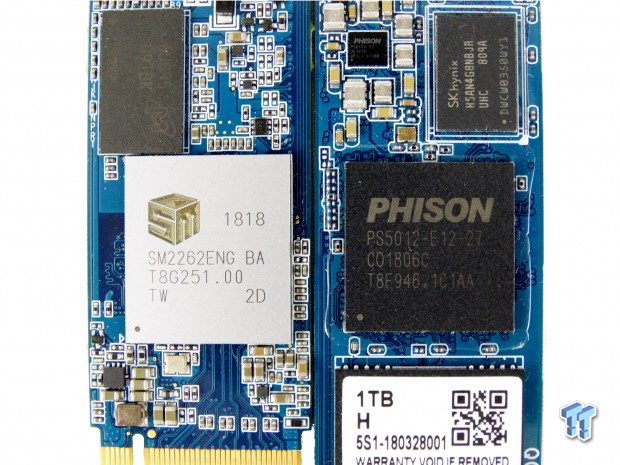
Today we take a brief look at the two next-generation controllers, the specifications and test both using existing 64-layer flash in order to see the progress made since the previous generation models shipping today. Since January, the premium NVMe SSD market has been quiet. Samsung released the 970 series, Phison partners shipped E8 4-channel mainstream products and Silicon Motion swept them all with low-cost SM2262 SSDs from Adata, HP, and Mushkin.
For several months, we've wondered why more companies didn't release products with the SM2262 controller. At Computex in June, we learned that all new products would ship with the SM2262EN controller, an optimized version of the SM2262. Just days ago, we also learned more about the flash companies' plans to release 96-layer memory sooner than we initially expected. It seems that companies chose to wait to combine technology in a single product rather than making two new models in short order.
We've learned a lot about upcoming 96-layer flash over the last two weeks. Both Samsung and Toshiba increased the interface performance, the speed data travels from the controller to the flash. Micron has not released many details on its third-generation 3D flash memory interface but we expect to learn more next month at Flash Memory Summit.
Specifications
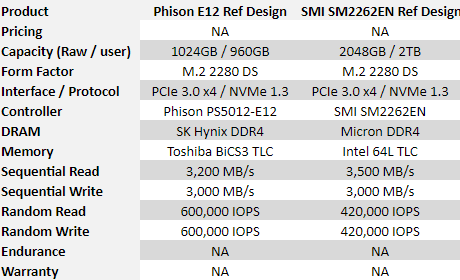
The higher interface speed requires a controller designed to take advantage of the reduced latency and bandwidth available from Toggle3 and ONFi 4.x. Both next-generation controllers we're looking at today support existing, and new interface speeds. Both controller also support up to 8-channels to the the memory for high-speed performance. The SM2262EN supports up to four chip enables (CE) per channel but the E12 supports up to thirty-two CE with reference designs for M.2 2280, 22110, U.2 and add-in cards to meet different market demands and very high capacities.
Increasing SSD density requires a lot of DRAM to keep a large cache for the table map. Both next-generation controllers support both DDR3 and DDR4 but the manufacturer of the final products will choose the memory based on market conditions, performance and pricing targets. The ability to choose memory allows each manufacturer to target different markets with products turned for pricing considerations, or lower power consumption.
Although SMI has shipped a number of designs with low-density parity check (LDPC) error correction technology, the E12 is Phison's first high-performance 8-channel NVMe controller to use the technology. The E12 uses a refined LDCP code first introduced by the company on the E8 in early 2018. The advanced technology is imperative for future designs using 4-bit per cell memory (QLC).
A Closer Look
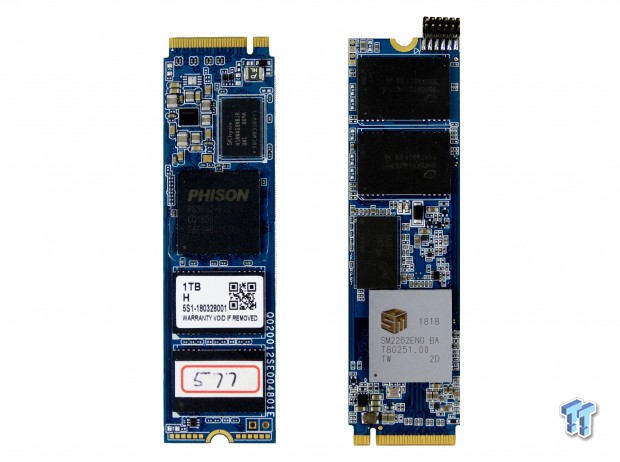
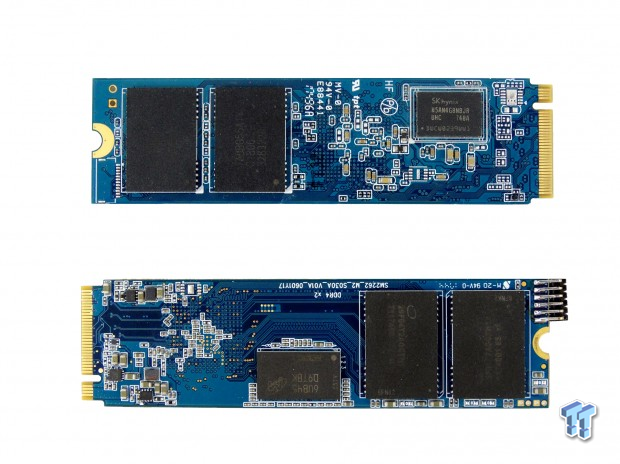
Today we have two early development drives from each company. The SMI SM2262EN reference design uses Intel 64-layer 3D memory. It's a 2TB drive using existing 64-layer memory technology. SMI has yet to finalize the firmware as of the time our sample arrived mid-June. The Phison PS5012-E12 sample uses Toshiba Toggle2 flash with a 400 MT/s interface, slower than the ONFi 3 flash on the SMI reference design. This is a 1TB sample with less capacity than the SM2262EN and running a slower flash interface speed.
We expect both controllers to ship with next-generation flash technology not available when our samples arrived. Some companies may choose to ship products with 64-layer memory, but with 96-layer memory reportedly shipping to customers, we expect retail products to use the faster design on premium SSDs.
High-Capacity Performance Testing
Product Comparison

It's important to not judge the two reference designs today based on performance. The E12 is at a disadvantage with less capacity, 1TB vs. 2TB, and with slower flash memory. The performance results will be impressive, but both companies stated they are still working on optimizations that will further increase performance beyond what we see today.
In some tests, we will see some existing product outperform our reference design samples. Those drives all have validated mature firmware compared to the early, less optimized firmware of the reference designs.
Sequential Read Performance


The SMI SM2262EN performs as we expect it to in our 128KB large block size sequential test. The drive starts at queue depth (QD) 1 at nearly 2,400 MB/s and scales up as we increase the workload before reaching right around 3,500 MB/s, the ceiling for our Asrock Z270 Taichi motherboards.
The Phison E12 doesn't like our test and gives us a false reading at low queue depths. We had the same issue with the SanDisk Extreme Pro NVMe 3D SSD a few months ago. I wouldn't be surprised if the new E12 and SanDisk controllers don't share some background together. These are the first controllers we've had this issue with running low numbers at QD1 and QD2 since the Intel SSD 750 from three years ago.
We know the low queue depth issue is a false reading because we can simply read data off the drive or run a simpler test to see higher performance. In HD Tune Pro the QD1 sequential read with the Phison E12 is 2,300 MB/s. We suspect the issue has something to do with the power management and the synthetic workload.
Sequential Write Performance


We're finished with false readings and can get to the exciting stuff now. Both next-generation controllers are wicked fast. The drives, even with current generation flash technology, write massive loads of sequential data. The Samsung 970 Pro is on the chart and is embarrassed to a degree by next-generation technology that can write over 3,000 MB/s, and get very close to that number at queue depth 2.
Sustained Sequential Write Performance

How the two drives get to those peak sequential write numbers if different. The SM2262EN is the same physical controller as the SM2262 shipping today. SMI and partners advanced the cache and uses programmed SLC technology to the fullest. The Phison E12 on the other hand just muscles through the sequential write workload. Both still trail the 970 Pro with MLC at QD1 but the gap between MLC and TLC has shrunk.
Random Read Performance

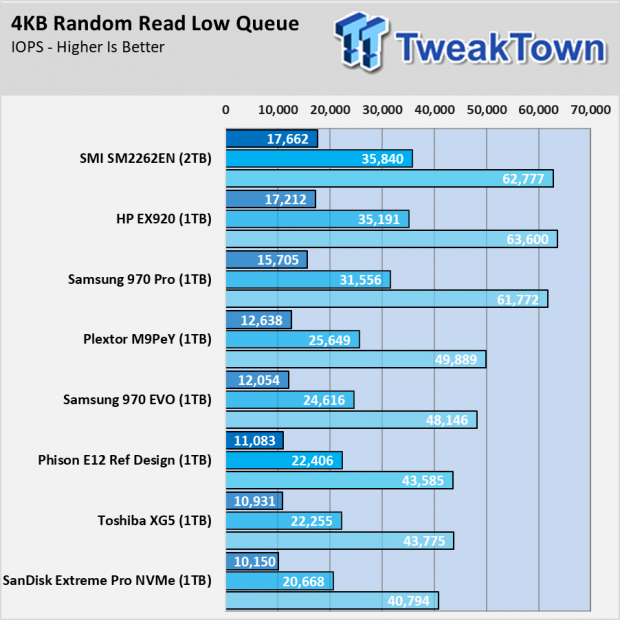
Micron's 64-layer flash has a big advantage over the other flash of the same generation. The flash helps the SM2262EN outperform the other drives at low queue depth random reads. The Phison E12 with 64-layer Toshiba BiCS technology steps on the other side of the 10,000 IOPS wall for premium SSDs. We really want to see what this controller can do with Micron's 64-layer or Toshiba's 96-layer technology.
Random Write Performance

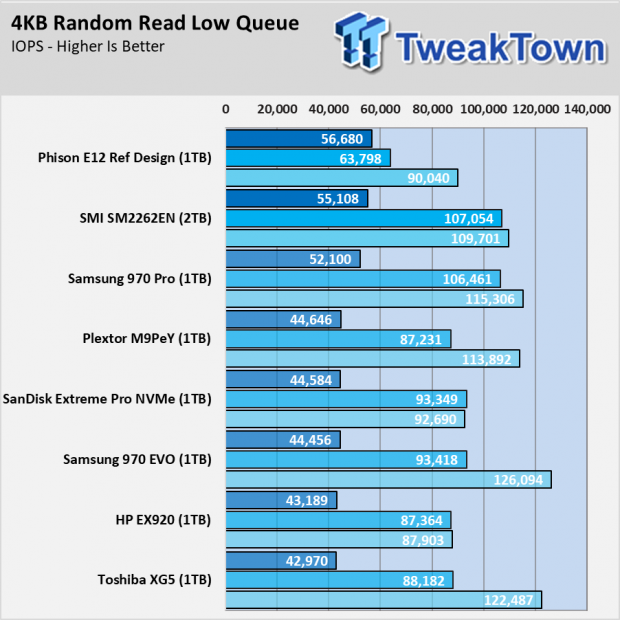
Both next-generation NVMe SSDs start with strong random write performance at QD1. The SM2262EN scales better than the E12 but it's with over 55,000 IOPS it's difficult to reach anything higher than QD2 with consumer applications.
70% Read Sequential Performance

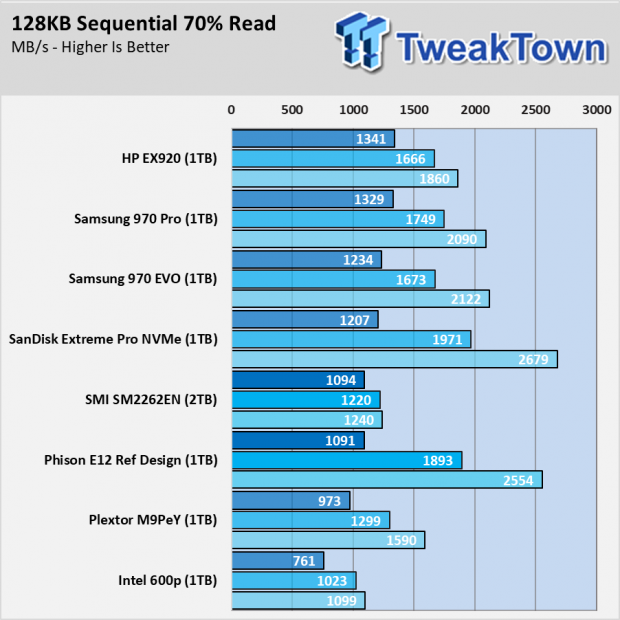
There is a massive difference between our two next-generation NVMe drives in our sequential mixed workload test. The Phison E12 follows the same path as the SanDisk Extreme Pro, another example of parallelism in testing that leads us to think the two share some DNA.
The SMI SM2262EN starts with similar performance at QD2, but doesn't scale well when we increase the workload through increased queue depth. We're not too concerned with the lack of increased throughput as we ramp the workload. This is a corner case that's often not optimized till the end of development.
70% Read Random Performance
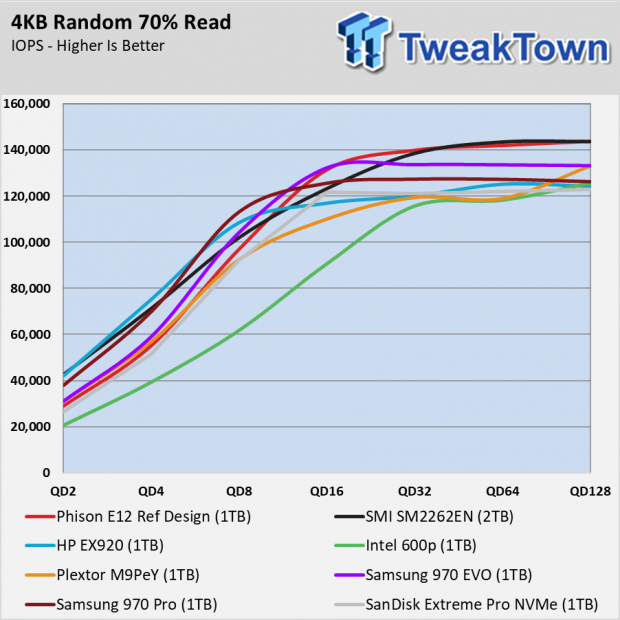
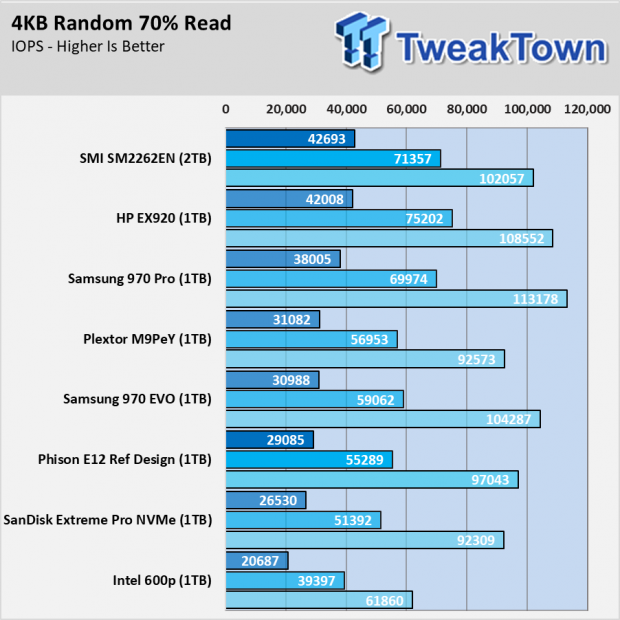
Phison controllers always seem to show weak mixed random workload performance. The E12 with BiCS FLASH has an excuse for the issue but we're not entirely sure next-generation flash, or even existing 64-layer Micron would increase performance here.
The SM2262EN shows a modest improvement over the SM2262 (HP EX920) at QD2 in our random mixed workload test. As we've mentioned in this article, retail drives tend to show stronger performance due to more mature firmware.
Real-World Benchmarks
Game Load Time
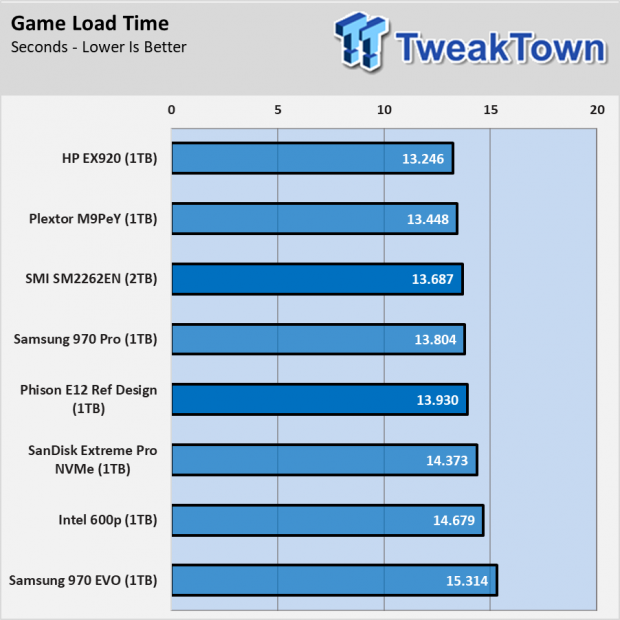
The "retail optimizations" are important to consider when looking at the load time test today. Our early reference design and the HP EX920 use the same flash, and same controller - from a hardware view - the software is different. When finally released, SM2262EN drives will be faster than retail products shipping today.
The E12 is the fastest game load drive from Phison to date. It's slightly faster than the E7 series that shipped almost exclusively with 15nm planar TLC memory. The E8 that succeeded the E7 is a value-focused mainstream 4-channel controller so Phison hasn't had a new high-performance product to compare to the E12 in two years.
PCMark 8 Total Storage Bandwidth
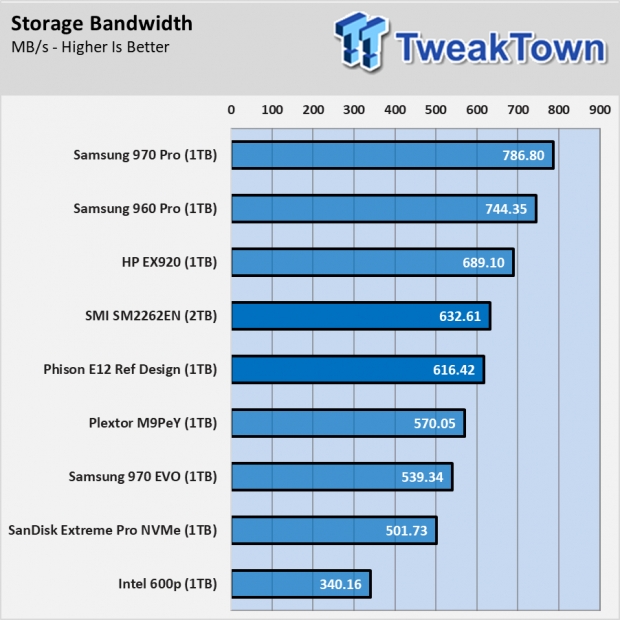
The PCMark 8 standard storage test uses ten typical applications to test the storage system. We present the combined results in throughput to gauge performance across a broad range of applications. The two next-generation NVMe drives sit very close together on the chart but still trail the Samsung Pro series models with MLC flash. The HP EX920 is also slightly faster.
PCMark 8 Extended Storage Test

In the extended storage test using the same applications, we focus mainly on the recovery phases. These are the usage model closest to a consumer workload coming from the initial hit of installing the operating system and applications, like when you first build and deploy a new system.
We've mentioned that the two next-generation drives take a different approach to achieving high performance. The SMI SM2262EN relies on cache more than the Phison E12. When you put a heavy emphasis on cache, the heavy workload performance falls lower, but the consumer-focused workloads see a greater improvement.
Phison prefers to use more processing power to handle background activities rather than cache. The result is higher performance under heavy workloads, but slightly less performance under less intensive workloads.
We've watched this play out for a number of product generations. Products like the Corsair Neutron XTi with a Phison S10 SATA controller are very good under workstation workloads but trail some consumer-focused products in lighter workloads.
SYSmark 2014 SE System Responsiveness and Power Tests
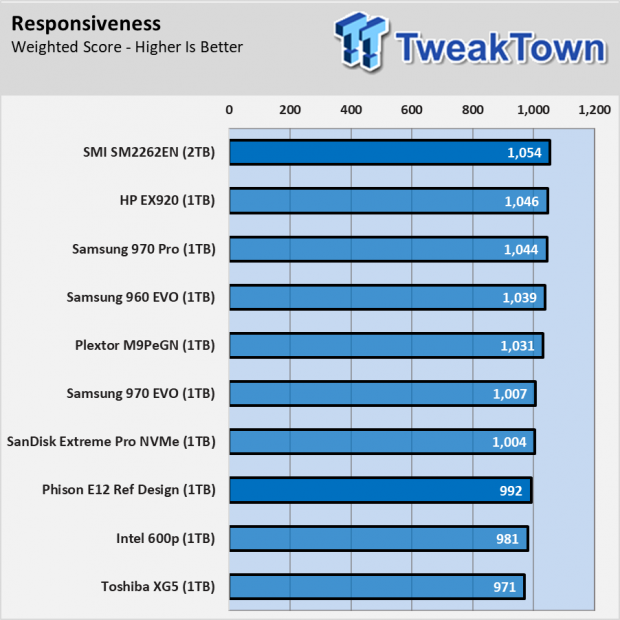
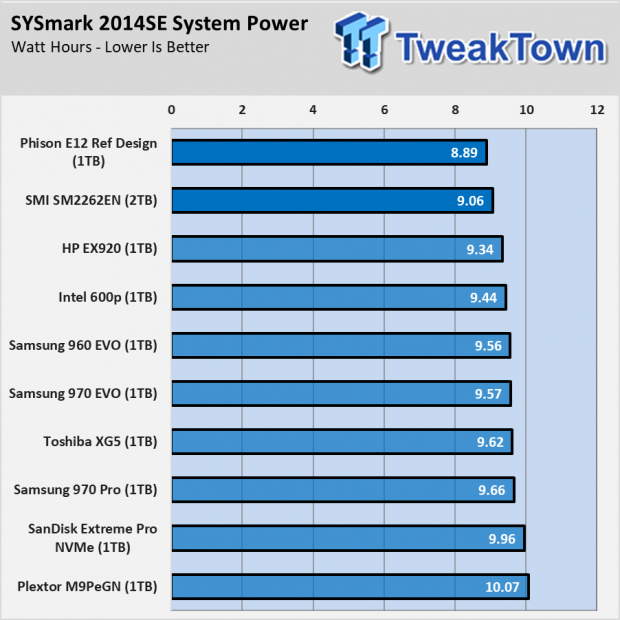
The BAPCo SYSmark Responsiveness Test favors strong cache policies. The workload focuses on light office activities with very little data written during the test. The base score of 1,000 comes from an OEM version of the 850 EVO.
The SMI SM2262EN improves on the HP EX920 design slightly and gives users a more responsive system with less latency. The Phison E12 reference design gets much closer to the baseline score but is still delivers a very snappy user experience.
Final Thoughts
Both drives show strong performance even with early firmware and existing flash technology. The controller and flash combination used for the reference design boards will likely never materialize in a retail product. It's important to keep that in mind because the performance will only get better with next-generation TLC flash.

SSD manufacturers could ship products based on the new controller designs before the end of the year. The emerging 96-layer flash may push some release timelines back to early 2019, but we're optimistic about the release schedule. Some of the more established brands should be able to ship products before the end of 2018, even with 96-layer memory. Others may choose to use 64-layer memory flash shipping today and later build a new product using 96-layer memory.
The dark horse we haven't looked at is how QLC or 4-bit per cell memory will factor in. QLC announcements started last year and companies have teased media with pictures of enterprise products on the cusp of coming to market. Both of the next-generation controllers we looked at today support QLC memory and the combination could be used to build a product tier between mainstream and premium while enticing users with higher capacities. We suspect companies will be eager to prove QLC's longevity and fitness for a wide range of uses just as we saw when TLC first came to market.
The most interesting aspect will be how you react to premium SSDs again. The market suffered from high prices for so long due to the flash shortage. For nearly two years, prices remained stagnant but in the last three to four months consumer SSD prices have dropped significantly. In that time we've spotted a number of entry-level models come to market and premium SSD prices have followed to stay competitive. Next-generation flash is less expensive to manufacture but the new "new" thing usually increases prices slightly before taking the technology side down. Some shoppers may opt for lower cost previous generation products instead of moving to the latest and greatest. From the signs we're getting from the flash fabs, it won't be long before we get an answer to that question.

 United
States: Find other tech and computer products like this
over at
United
States: Find other tech and computer products like this
over at  United
Kingdom: Find other tech and computer products like this
over at
United
Kingdom: Find other tech and computer products like this
over at  Australia:
Find other tech and computer products like this over at
Australia:
Find other tech and computer products like this over at  Canada:
Find other tech and computer products like this over at
Canada:
Find other tech and computer products like this over at  Deutschland:
Finde andere Technik- und Computerprodukte wie dieses auf
Deutschland:
Finde andere Technik- und Computerprodukte wie dieses auf